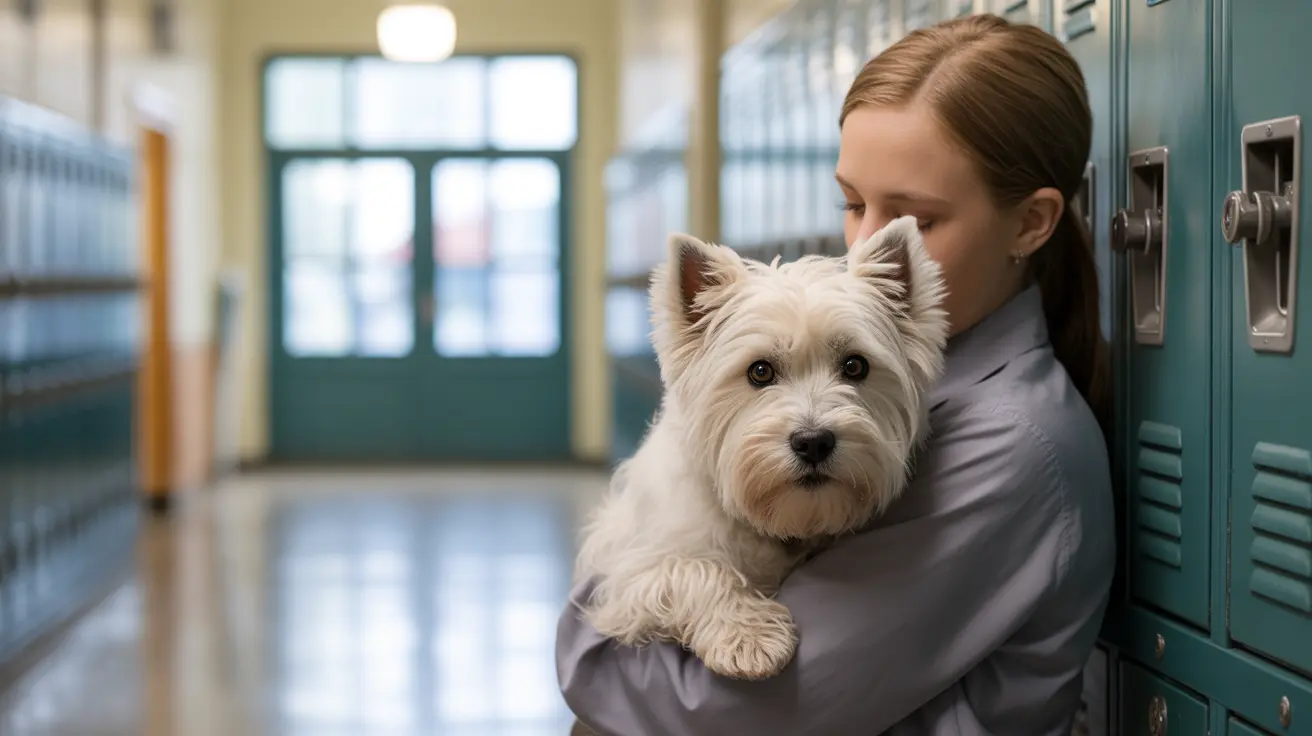Students at a Long Island high school are experiencing the transformative power of animal companionship through innovative therapy dog programs and diverse animal integration initiatives. These programs are providing much-needed emotional support and stress relief during challenging academic periods, demonstrating the profound benefits of therapy dogs for anxiety and overall student wellbeing.
The implementation of therapy dog programs in schools represents a growing recognition of how animals can serve as powerful tools for mental health support in educational settings. As students navigate academic pressures, social challenges, and lingering effects from recent global disruptions, schools are turning to certified therapy animals to create calming, supportive environments that promote both emotional stability and learning.
Animal-Assisted Therapy for Students: A Comprehensive Approach
The Long Island school's approach extends beyond traditional therapy dog visits to include a variety of animals that contribute to student wellness. This comprehensive model of school animal integration creates multiple touchpoints for students to connect with therapeutic animals throughout their school experience.
Animal-assisted therapy programs in educational settings typically involve trained professionals working alongside certified therapy animals to provide structured interventions. These programs are designed to reduce stress hormones, lower blood pressure, and increase the production of mood-enhancing chemicals like serotonin and dopamine in students who interact with the animals.
Benefits of Therapy Dogs for Anxiety and Academic Performance
Research consistently shows that therapy dogs can significantly impact student mental health outcomes. The calming effects of school animals help create an environment where students feel more relaxed and open to learning. When students experience reduced anxiety levels, they often demonstrate improved focus, better social interactions, and increased willingness to participate in classroom activities.
The presence of therapy dogs can be particularly beneficial for students who may struggle with traditional counseling approaches. Many young people find it easier to open up and express their feelings when a gentle, non-judgmental animal is present, making therapy sessions more effective and comfortable.
Diverse Animal Habitats in Education Settings
Beyond therapy dogs, some schools are incorporating other animals like koi fish and turtles to create peaceful, contemplative spaces for students. These animal habitats in education serve as quiet retreat areas where students can decompress and find moments of tranquility during busy school days.
The inclusion of aquatic animals and small reptiles provides different types of therapeutic benefits. Watching fish swim or observing the slow, deliberate movements of turtles can have a meditative effect, helping students practice mindfulness and emotional regulation skills.
Student Mental Health and Pets: Building Lasting Connections
The relationship between student mental health and pets extends beyond the immediate therapeutic benefits. Regular interaction with school animals can teach students valuable lessons about responsibility, empathy, and nurturing behavior. These experiences often translate into improved social skills and emotional intelligence that benefit students in all areas of their lives.
Long Island school wellness programs that incorporate animals are setting a precedent for how educational institutions can address the growing mental health needs of their student populations. By providing consistent access to therapeutic animal interactions, schools create supportive environments that acknowledge and address the emotional challenges students face.
Implementation and Safety Considerations
Successful therapy dog programs require careful planning and adherence to safety protocols. Schools must work with certified therapy dogs and their handlers to ensure all interactions are safe, supervised, and beneficial for both students and animals. This includes establishing clear guidelines for student participation and maintaining appropriate hygiene standards.
The therapeutic animal interaction benefits are maximized when programs are implemented with proper training, clear objectives, and ongoing evaluation. Schools typically work with established therapy animal organizations to ensure their programs meet professional standards and provide genuine therapeutic value.
Frequently Asked Questions
How do therapy dog programs in Long Island schools help students cope with anxiety and stress?
Therapy dog programs provide students with opportunities for calming interactions that naturally reduce stress hormones and anxiety levels. The presence of gentle, trained dogs creates a supportive environment where students can practice relaxation techniques and experience emotional comfort during challenging periods.
What types of animals are integrated into school environments beyond therapy dogs, and what benefits do they offer?
Some schools incorporate aquatic animals like koi fish and turtles, which provide different therapeutic benefits such as promoting mindfulness and creating peaceful spaces for reflection. These animals offer students alternative ways to experience the calming effects of animal interaction.
How often do therapy dogs visit schools, and how are these visits structured for student participation?
Visit schedules vary by program and school needs, but many schools arrange regular visits to ensure consistent access to therapeutic benefits. Sessions are typically structured with trained handlers supervising interactions and may include individual or small group activities designed to maximize therapeutic outcomes.
Can having animals on campus improve students' emotional wellbeing and academic engagement simultaneously?
Yes, research indicates that reduced anxiety and improved emotional regulation from animal interactions often correlate with better focus and increased classroom participation, creating a positive cycle that benefits both mental health and academic performance.
How do schools ensure the animals used for therapy are certified and safe for interactions with students?
Schools partner with certified therapy animal organizations that provide properly trained animals and handlers. These programs follow strict safety protocols, health screenings, and behavioral assessments to ensure all interactions are safe and appropriate for educational environments.





